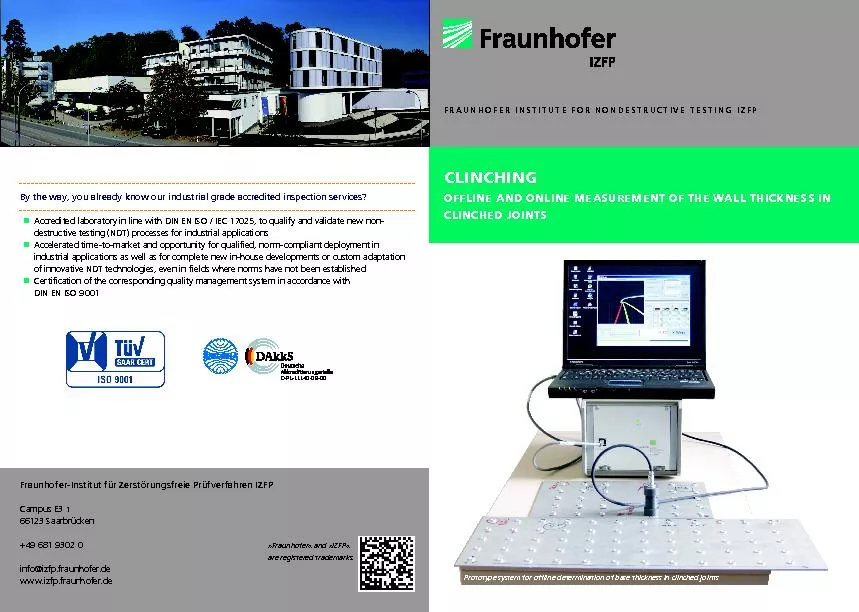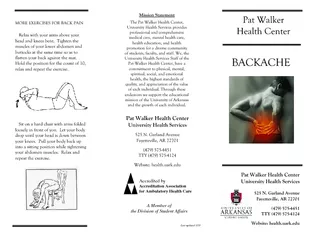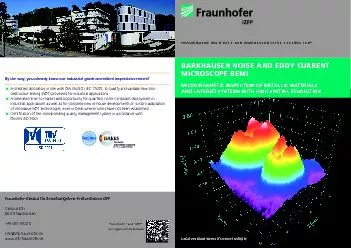PDF-By the way, you already know our industrial grade accredited inspectio
Author : kittie-lecroy | Published Date : 2016-10-31
Accredited laboratory in line with DIN EN ISO IEC 17025 to qualify and validate new non destructive testing NDT processes for industrial applications Accelerated
Presentation Embed Code
Download Presentation
Download Presentation The PPT/PDF document "By the way, you already know our industr..." is the property of its rightful owner. Permission is granted to download and print the materials on this website for personal, non-commercial use only, and to display it on your personal computer provided you do not modify the materials and that you retain all copyright notices contained in the materials. By downloading content from our website, you accept the terms of this agreement.
By the way, you already know our industrial grade accredited inspectio: Transcript
Download Rules Of Document
"By the way, you already know our industrial grade accredited inspectio"The content belongs to its owner. You may download and print it for personal use, without modification, and keep all copyright notices. By downloading, you agree to these terms.
Related Documents














